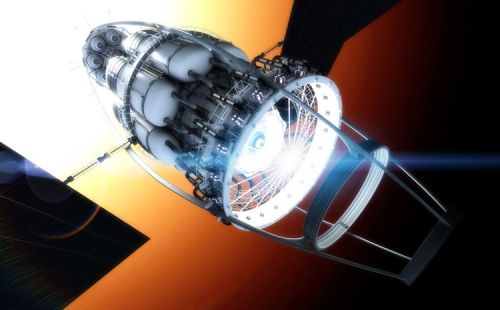Thinking about Eugen Sänger’s photon rocket concept inevitably calls to mind his Silbervogel design. The ‘Silverbird’ had nothing to do with antimatter but was a demonstration of the immense imaginative power of this man, who envisioned a bomber that would be launched by a rocket-powered sled into a sub-orbital trajectory. There it would skip off the upper atmosphere enroute to its target. The Silbervogel project was cancelled by the German government in 1942, but if you want to see a vividly realized alternate world where it flew, have a look at Allen Steele’s 2014 novel V-S Day, a page-turner if there ever was one.
I almost said that it was a shame we don’t have a fictionalized version of the photon rocket, but as we saw yesterday, there were powerful reasons why the design wouldn’t work, even if we could somehow ramp up antimatter production to fantastic levels (by today’s standards) and store and manipulate it efficiently. Energetic gamma rays could not be directed into an exhaust stream by the kind of ‘electron gas mirror’ that Sänger envisioned, although antimatter itself maintained its hold on generations of science fiction writers and scientists alike.
Enter the Antiproton
Sänger’s presentation at the International Astronautical Congress in 1953 came just two years ahead of the confirmation of the antiproton, first observed at the Berkeley Bevatron in 1955. Now we have something we can work with, at least theoretically. For unlike the annihilation of electrons and positrons, antiprotons and protons produce pi-mesons, or pions, when they meet. Pions don’t live long, with charged pions decaying into muons and muon neutrinos, while neutral pions decay into gamma rays. Those charged pions, however, turn out to be helpful indeed.
